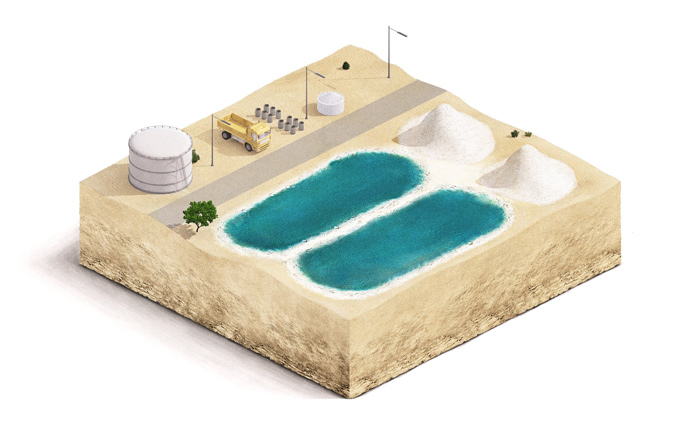
Once brine reaches concentrations approaching 30% in the evaporative hedges, almost 90% of the freshwater content will have been removed. At this point, the brine will get a too high concentration to continue the evaporation process. The brine will then be left in salt evaporation ponds and form the basis for ordinary commercial salt production. Salt evaporation ponds, also called salterns or salt pans, are shallow artificial ponds traditionally designed to produce salts from seawater or other brines. The brine from the evaporative hedges in a Sahara Forest Project Facility will be fed into such large ponds. The remaining water will be drawn out through natural evaporation, allowing the salt to be harvested.
Traditional desalination plants typically extract less than 50% of the available freshwater before returning the brine as a waste product to the sea. The return of water with increased salinity and reduced oxygen content can lead to significant disruptions on often already fragile coastal ecosystems by creating a habitat unnaturally favorable to species that can tolerate high salinities and by suffocating organisms that reside on the seafloor when heavier oxygen-depleted brine sinks. Moreover, returning brine to the sea for inland facilities represents an additional infrastructural and operational cost, while dumping it on land has unacceptable consequences for groundwater and soil quality. In a Sahara Forest Project Facility, we are instead achieving a zero-discharge facility, with salt as a commercial product.
